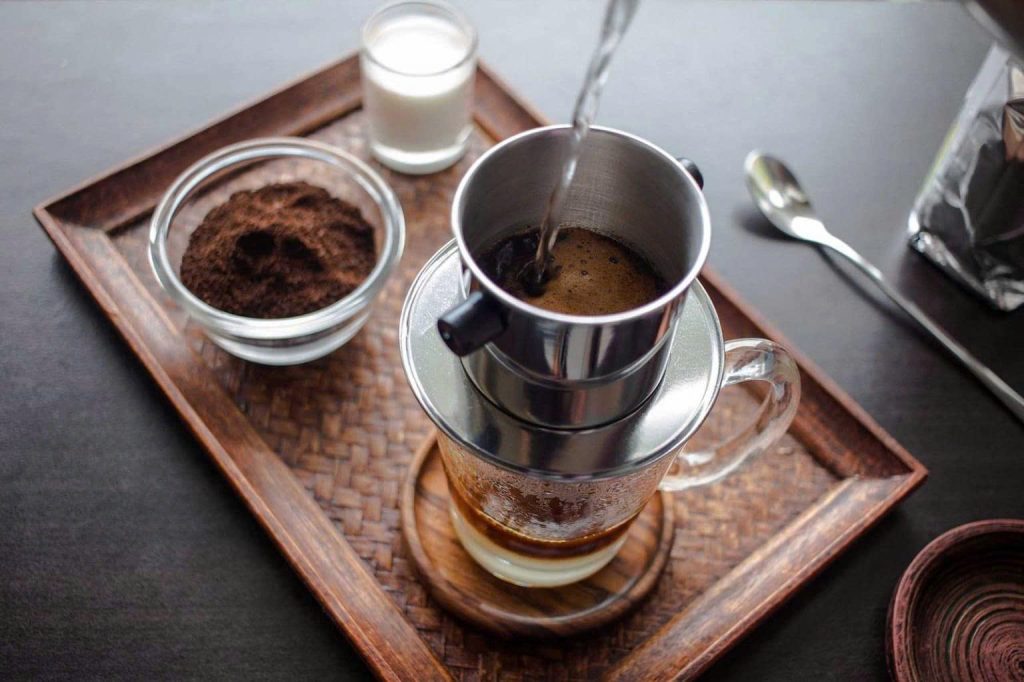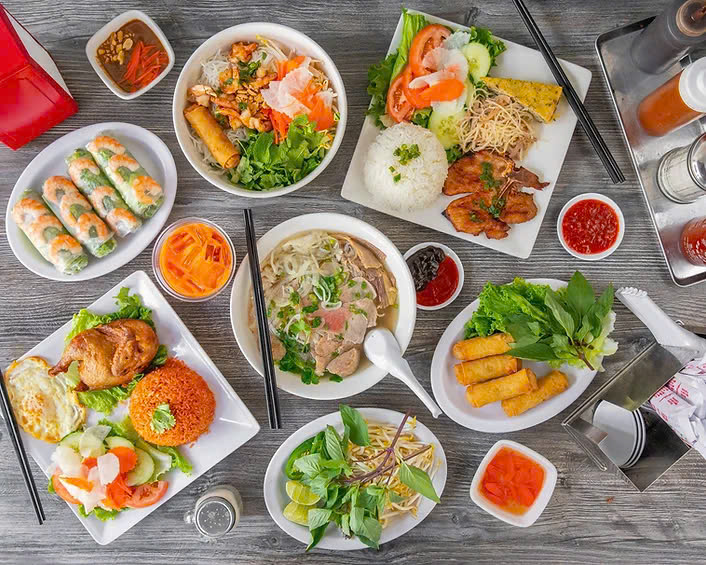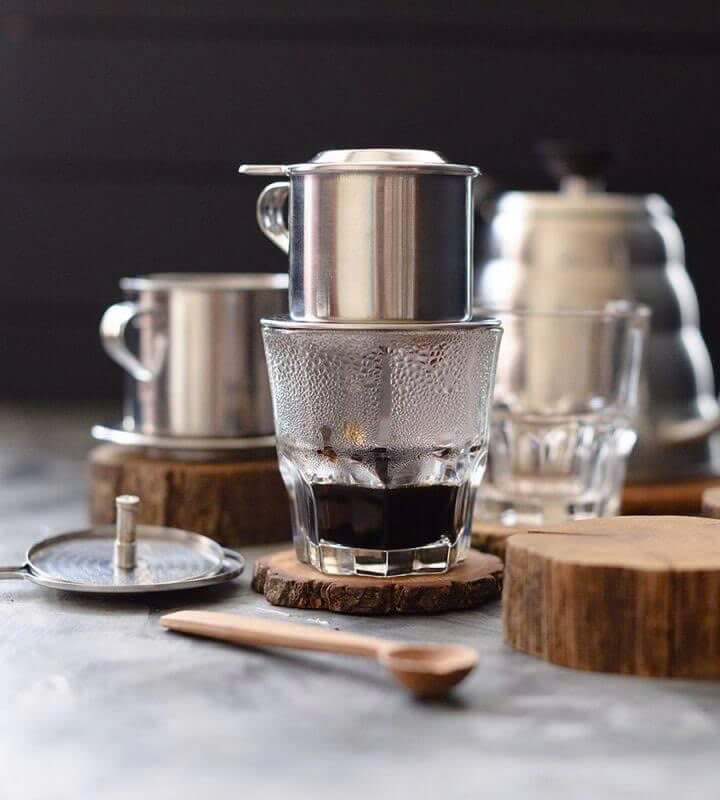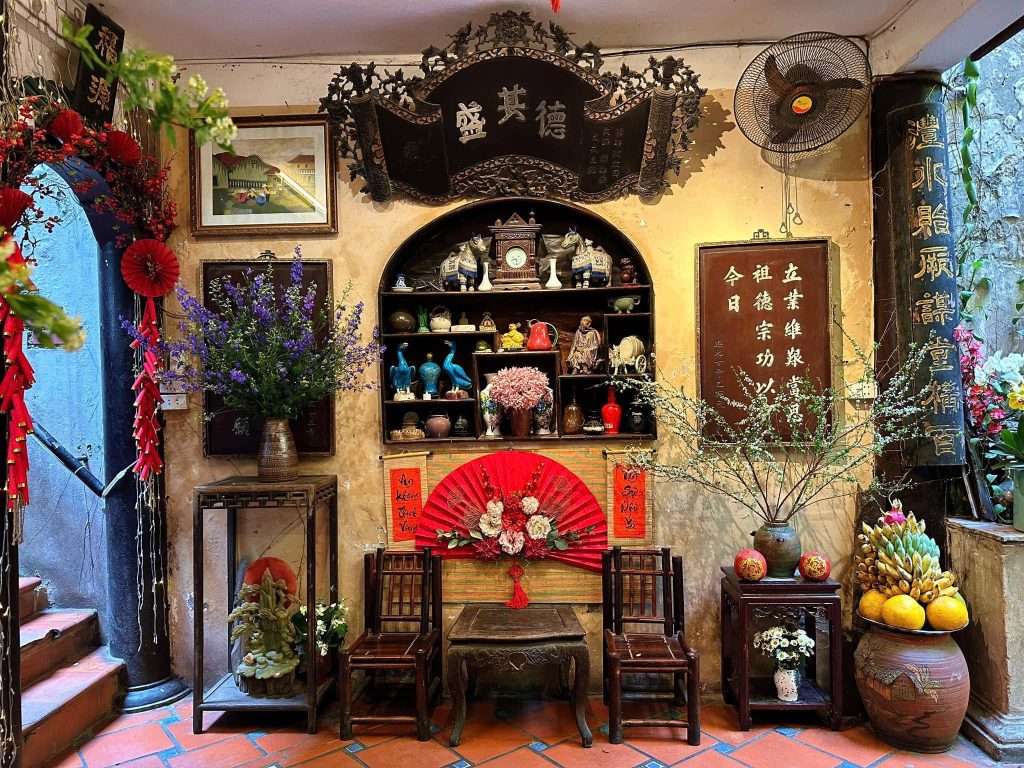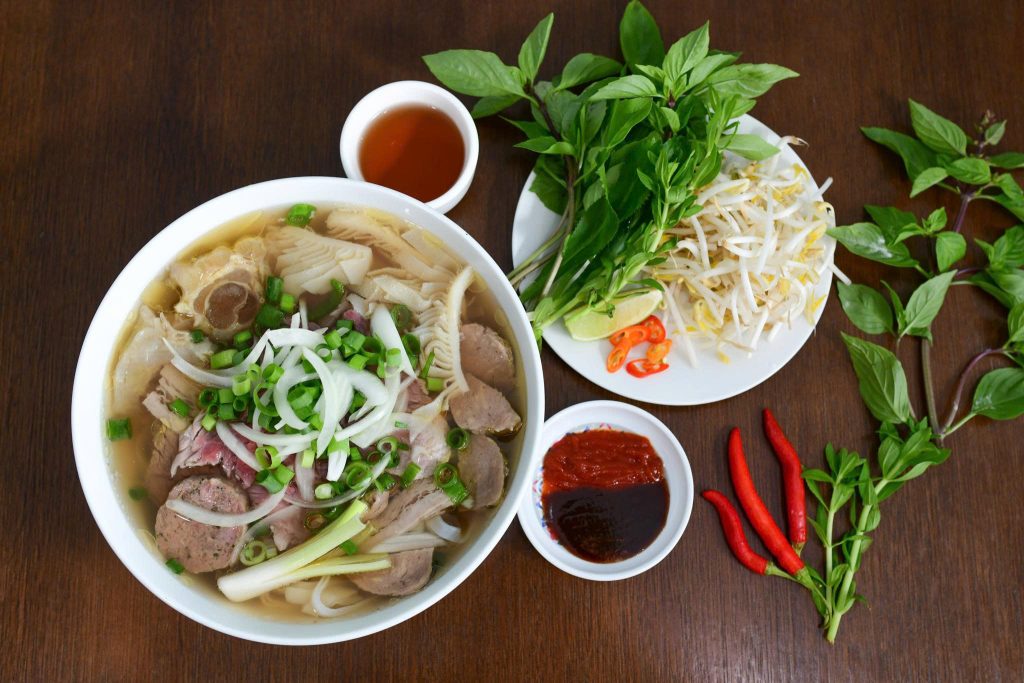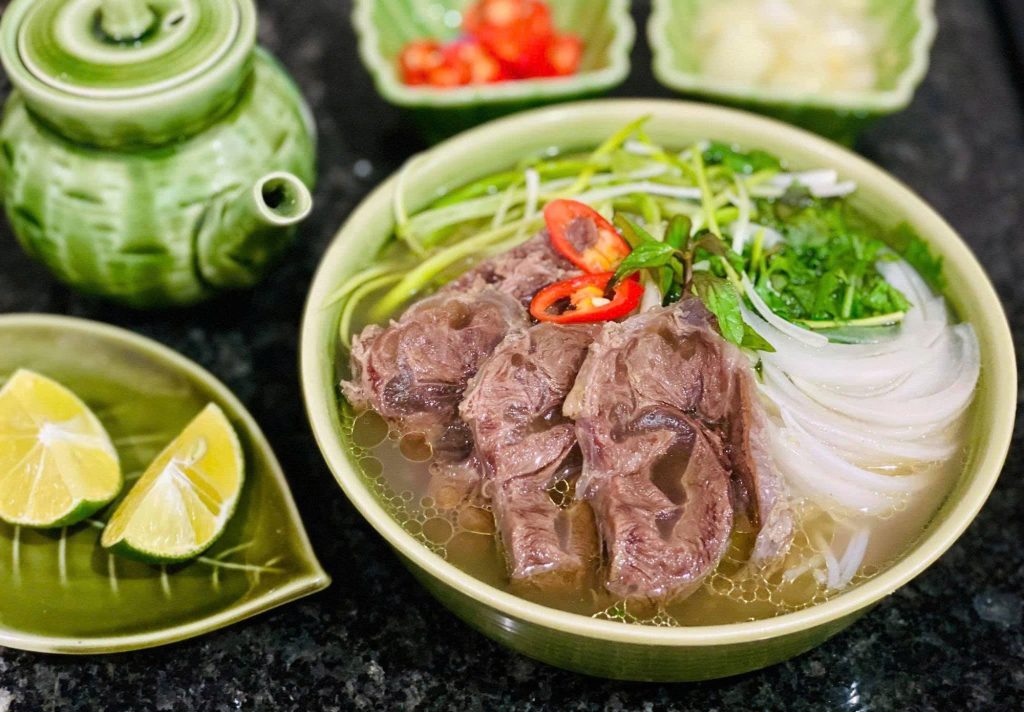Discovering the perfect cup of Vietnamese phin coffee at home is a journey of both art and science. This detailed guide, tailored to meet your search intent, provides a comprehensive, step-by-step process for brewing authentic phin coffee. We will cover everything from selecting the right coffee beans and equipment to mastering the brewing technique and troubleshooting common issues. By following these best practices, you will be able to replicate the rich, bold, and aromatic experience that has made Vietnamese coffee a global favorite.
Understanding the Essence of Vietnamese Phin Coffee
Before we dive into the brewing process, it’s essential to understand what makes phin coffee so unique. The term “phin” refers to the small, gravity-based metal filter that sits atop a glass or mug. This brewing method is revered for its simplicity and the distinct flavor profile it produces. Unlike other brewing methods that rely on quick extraction, the phin allows for a slow, gentle drip, resulting in a brew that is intensely concentrated, low in acidity, and exceptionally rich.
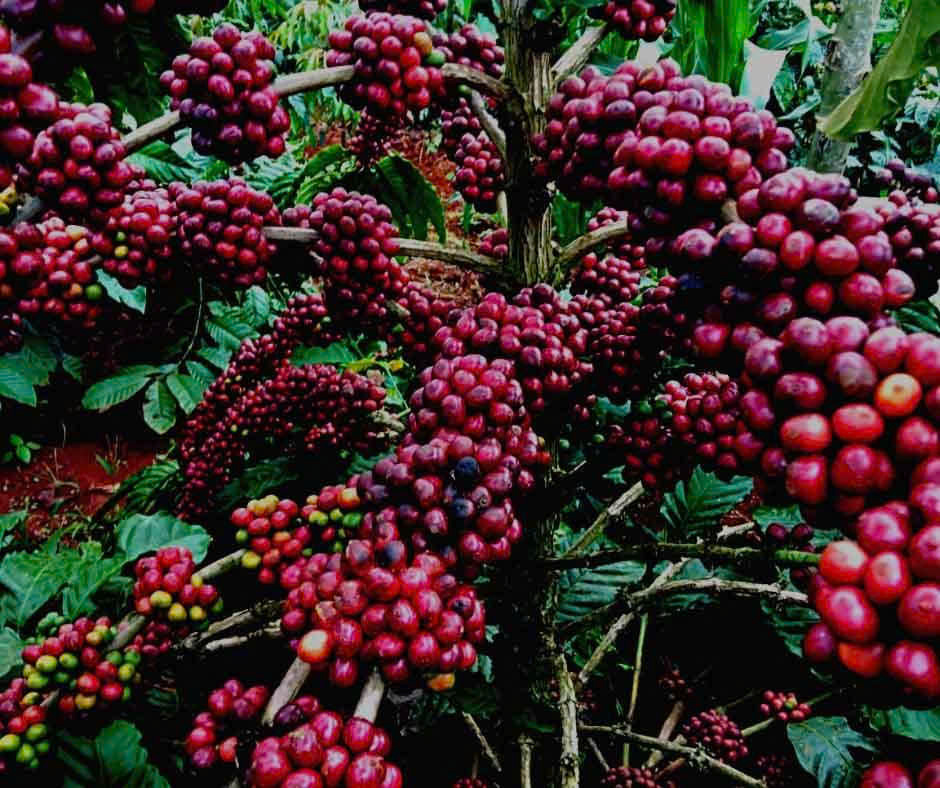
The Philosophy of Phin Coffee
The act of brewing phin coffee is a ritual of patience and mindfulness. It’s not a quick fix; it’s a slow-paced ceremony that rewards the brewer with a sensory experience. From the visual appeal of the slow-drip to the intoxicating aroma that fills the air, every step is a part of the enjoyment. This method is the heart of Vietnamese coffee culture, and mastering it means embracing this very philosophy.
Choosing Your Ingredients and Equipment
The quality of your final cup is a direct reflection of your ingredients. Don’t compromise on these essentials.
1. Phin Filter
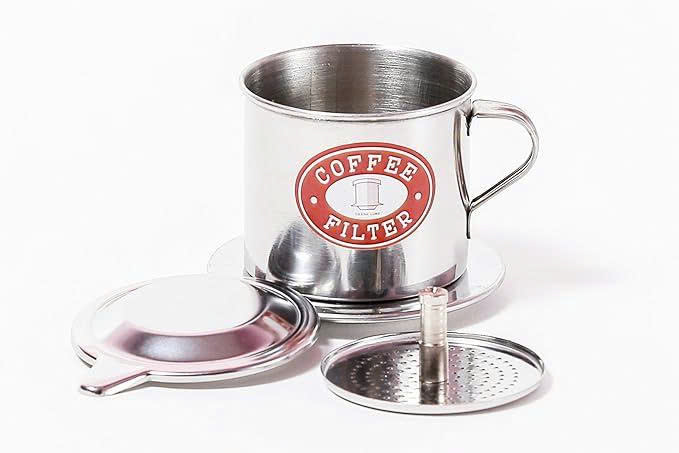
- Types: Phin filters come in various materials, including aluminum, stainless steel, and ceramic. Stainless steel phins are highly recommended for their durability, rust resistance, and ability to retain heat, which ensures a more stable extraction.
- Size: A single-serve phin (typically 6-8 ounces) is perfect for home use. Ensure the phin has a well-fitting press or screw-down tamper to help with a consistent extraction.
2. Vietnamese Coffee Beans

- The Robusta Bean: The traditional choice for phin coffee is the Robusta bean. Known for its strong, nutty flavor and high caffeine content, Robusta forms the backbone of the bold taste profile.
- The Arabica Blend: For those who prefer a more balanced and aromatic cup, a blend of Robusta and Arabica beans can be an excellent choice. Arabica adds a layer of complexity with its sweeter, more floral notes.
- Roast Level: Look for a medium to dark roast. The dark roast is what gives phin coffee its iconic dark color and robust, slightly bitter taste. Ensure the beans are fresh and ground coarsely. Pre-ground Vietnamese coffee is widely available and often specifically formulated for this brewing method.
3. Water
- Quality: Use filtered water to avoid any off-flavors from chlorine or minerals.
- Temperature: The ideal water temperature is crucial for proper extraction. Aim for a temperature between 90-95°C (195-205°F). Water that is too hot can lead to over-extraction and a bitter taste, while water that is too cool will result in a weak, under-extracted brew.
4. Additional Ingredients
- Sweetened Condensed Milk: A non-negotiable for Cà Phê Sữa Đá (iced coffee with condensed milk).
- Sugar: For Cà Phê Đen (black coffee).
- Ice: Essential for a refreshing iced coffee.
Step-by-Step Guide: The Art of Brewing Phin Coffee
Follow these steps precisely to master the technique and unlock the full potential of your Vietnamese coffee.
Step 1: Preparation is Key (Tráng Phin)
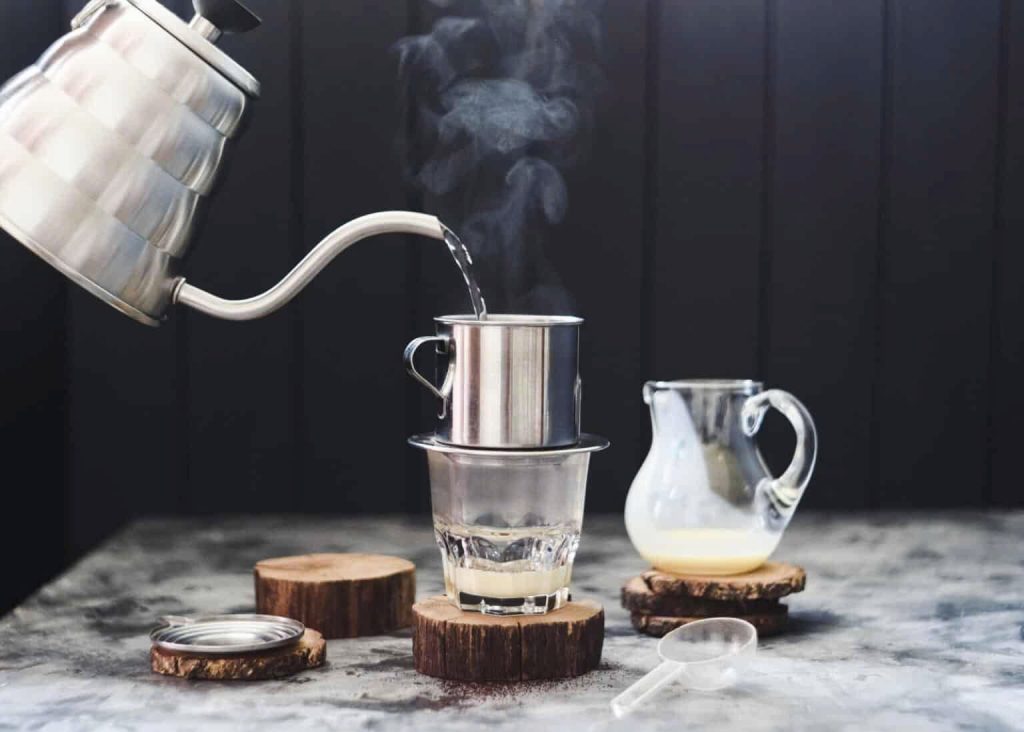
- Place the phin filter (including the filter plate and press) in a large mug or glass.
- Warm up the phin filter and the coffee mug by pouring a small quantity of hot water over each. This process, known as “tráng phin,” prevents the coffee from cooling down prematurely and ensures a consistent temperature throughout the brewing process. Discard the water from the mug.
Step 2: Add Coffee Grounds and Tamp
- Add 20-25 grams of coarsely ground Vietnamese coffee to the phin filter.
- Gently shake the phin to level the grounds.
- Place the phin press on top of the grounds. Press down firmly to create a compacted bed. The tightness of your press will determine the flow rate, so this step is critical. A gentle but firm press is ideal for a smooth drip.
Step 3: The Blooming Phase (Ủ Cà Phê)
- Pour about 20 ml (just enough to cover the grounds) of hot water (90-95°C) into the phin.
- Let the coffee grounds “bloom” for 30-45 seconds. This is the “ủ cà phê” (wetting the coffee) stage. The grounds will swell as they release carbon dioxide, preparing them for optimal extraction. You will see bubbles and a gradual swelling of the coffee bed.
Step 4: The Main Drip (Chiết Xuất Cà Phê)
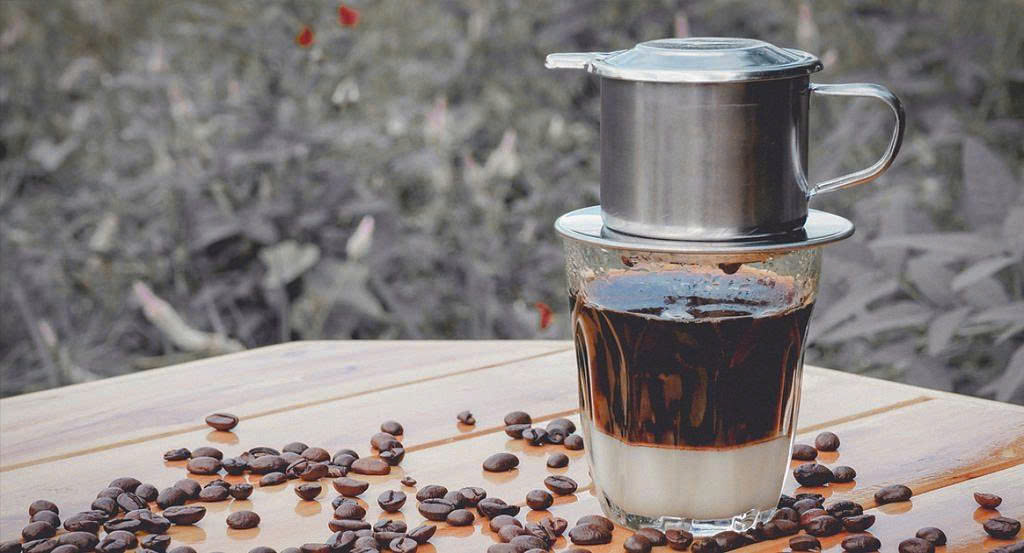
- After blooming, slowly pour the remaining hot water (about 80-100 ml) into the phin.
- Place the lid on top to keep the heat in.
- The coffee will begin to slowly drip into the glass below. The ideal drip rate is about one drop per second.
Step 5: The Wait and Final Touch
- The entire brewing process should take approximately 4-6 minutes. A faster drip may indicate under-extraction, while a slower drip could mean over-extraction.
- After the final drop of coffee has fallen, lift the phin away from the mug.
- Stir the coffee to combine the brew. Add sweetened condensed milk for a Cà Phê Sữa Đá or enjoy it as a rich, black coffee.
Troubleshooting Common Phin Coffee Problems
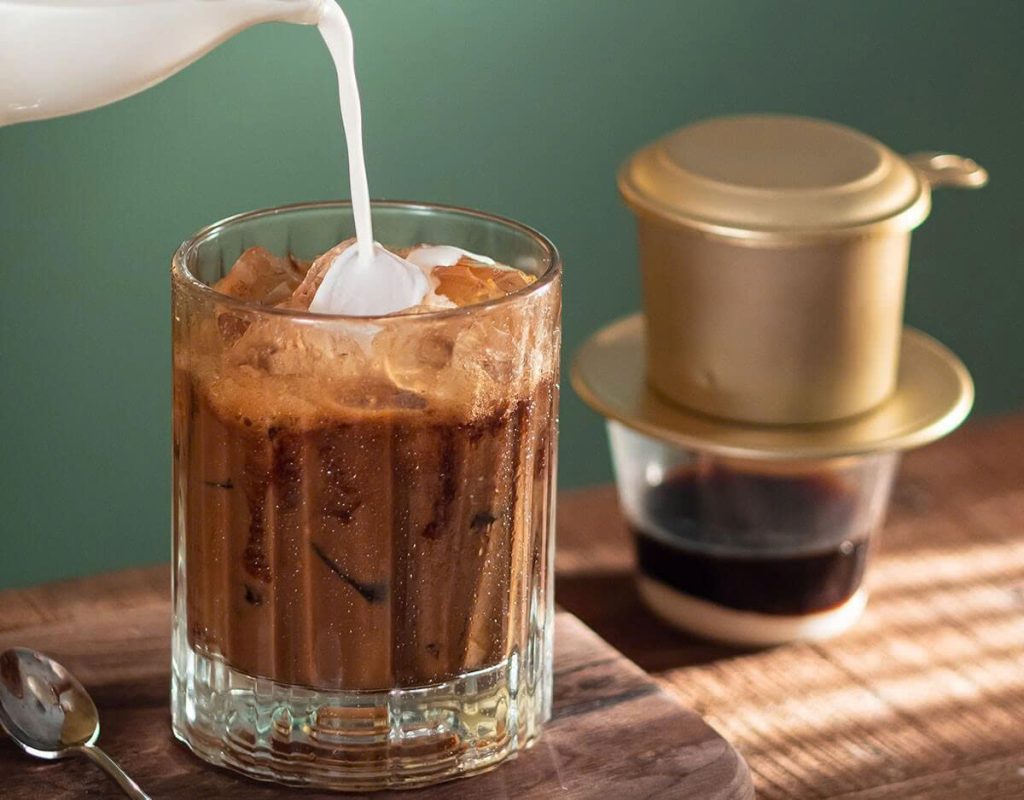
Even with a detailed guide, you may encounter issues. Here’s how to fix them.
- Problem: Coffee is dripping too fast.
- Fix: Your grounds are likely not compacted enough or are too coarse. Try using a finer grind or pressing the tamper more firmly in the future.
- Problem: Coffee is dripping too slowly or not at all.
- Fix: Your grounds are either too finely ground or you have pressed the tamper too tightly. Try a slightly coarser grind or a lighter press on your next brew.
- Problem: The coffee tastes weak.
- Fix: This is a classic sign of under-extraction. Ensure your water temperature is correct (90-95°C), the grounds are sufficiently bloomed, and the drip time is within the 4-6 minute range. Using a little more coffee or a slightly finer grind can also help.
- Problem: The coffee tastes bitter.
- Fix: This is a sign of over-extraction. Your water might be too hot, or the drip time is too long. Adjust your water temperature or use a slightly coarser grind to speed up the process.
The Cultural and Commercial Significance
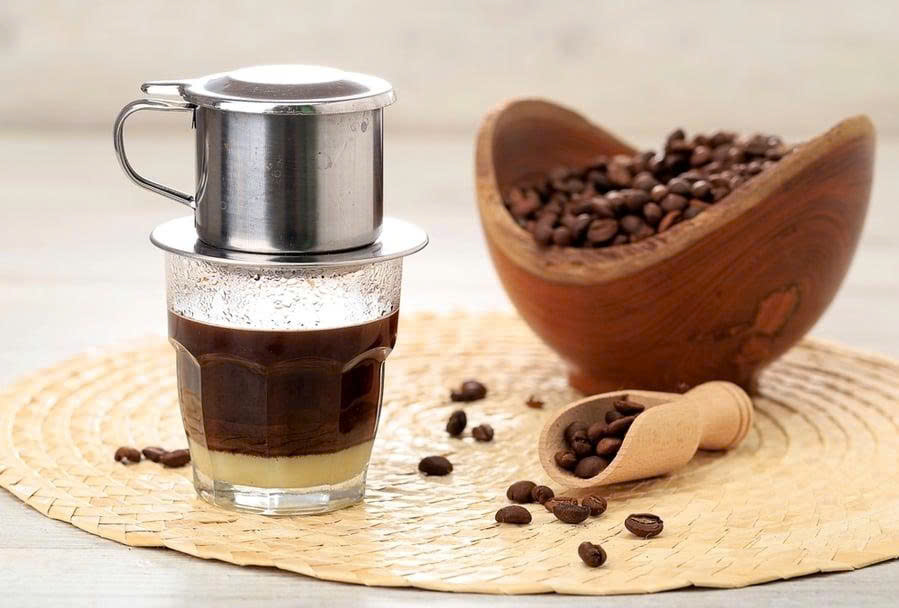
Vietnamese phin coffee is more than a beverage; it is a cultural phenomenon. It symbolizes the country’s rich history and has become a global export, with Vietnamese coffee brands now found in cafés and homes worldwide. The simple phin filter has become an entity in itself, recognized globally as a symbol of authentic Vietnamese coffee.
RELATED: The Best Cafes in Ho Chi Minh City: Saigon’s Coffee Guide
This guide aims to not only provide you with the how-to but also with a deeper understanding of the tradition. By following these principles, you are not just making a cup of coffee; you are participating in a cherished cultural practice.
Brewing a perfect cup of Vietnamese phin coffee is a rewarding experience that requires a little practice and patience. By understanding the key entities—the phin filter, the Robusta bean, and the precise steps of blooming and extraction—you can create a rich, authentic brew right in your own kitchen. Enjoy the process, savor the flavor, and share the unique experience of phin coffee with others.

